In our recent trip to Lake Alqueva, border territory between Spain and Portugal en Estremadura, we have discovered one of those pretty towns that we like so much.
Is Olivenza, very nice town of the badajoz province, of which to get an idea of its very special idiosyncrasy, you have to know a couple of very curious things.
On the one hand, oliventinos and the descendants of oliventinos They have the right to dual Spanish-Portuguese nationality, something very very rare, and on the other hand, this region was the last to be incorporated into the territory of Spain.
That is why this region in full Extremadura meadow It is so attractive, since it has been formed over the centuries of a transnationality that is especially palpable.
Olivenza is a walled city of Templar origin located less than 30 kilometers south of Badajoz, on the eastern margin of the Guadiana river, a place that has always been halfway between the rule of the Spanish and the Portuguese.
All the information in detail
Curiosities of the history of Olivenza
Much of the border between both countries in this area is drawn through the aforementioned Guadiana river, which has made it a strategic combat zone for many years.
In fact in Olivenza Today, older people speak Portuguese, although it has been lost in the intermediate generations and even more so in the younger ones.
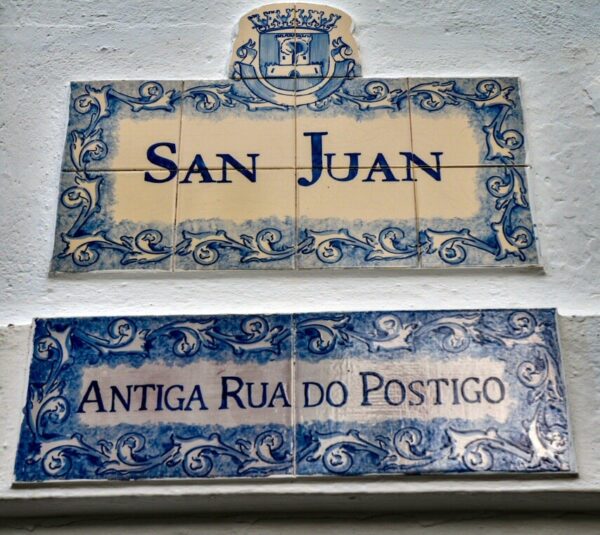
This has given rise to a double toponymy in the signage of the streets of Olivenza, above the current name in Spanish, and below the old name in Portuguese.
On a monumental level, Olivenza stands out among other things for its walls, since it is one of the historical complexes with the most walled extensions of the peninsula.
We must also highlight the churches with their samples of sacred art, especially the golden carvings and especially the manueline art Portuguese.
What's more, it is the only place in Spain where you can see a significant presence of the aforementioned manueline art.
Olivenza It is a municipality that includes several villages such as Saint George of Alor, which stands out for its Alentejo-influenced chimney, Villarreal de Olivenza, with its connection to Guadiana: San Benito de la Contienda, where better Portuguese is spoken.
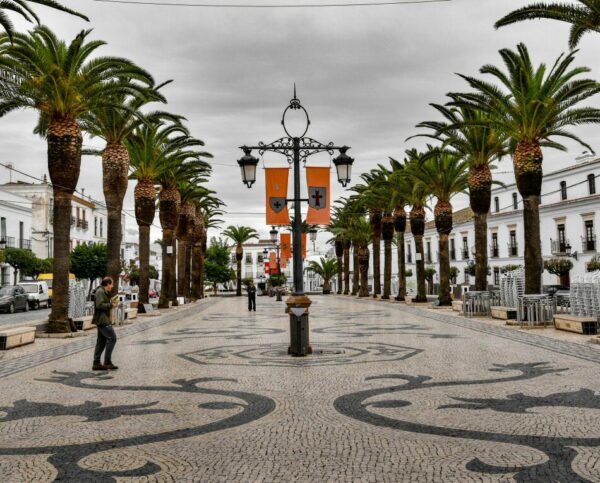
When many Jews were expelled from Spain, they settled in Portuguese towns near the border, as was then the case. Olivenza, which greatly increased the presence of a Jewish community at that time.
Olivenza, between Spain and Portugal
To delve deeper into the history of Olivenza, we must go back to 1297 when an important agreement was signed between Castilla y Portugahe who would be known as the Treaty of Alcañices.
Through it a border is fixed from Galicia to the north, up Andalusia in the south, what would later end up being the Spanish-Portuguese border.
As a consequence of the treaty, certain localities along the border are integrated into Castile, as is the case of Hoop y Aracena, while others are integrated into Portugal, the case of Campo Maior and Olivenza.
Subsequently Olivenza It has gone through numerous vicissitudes, with a period of splendor in the 16th century that had a lot to do with the overseas expansion of Portugal.
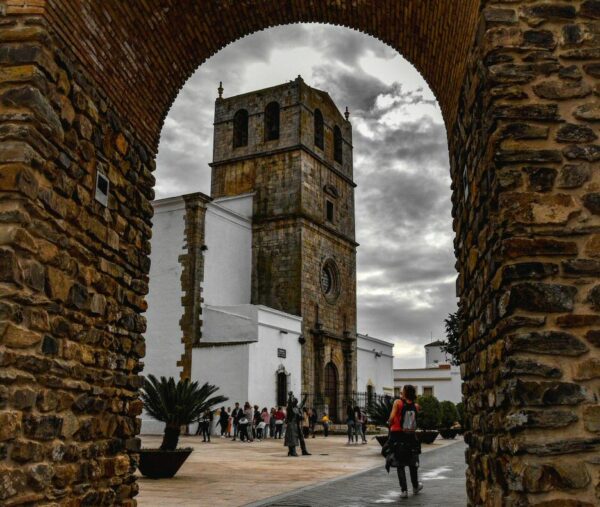
There is another period also well known which is the time of the Philips, which is how the period between 1580 and 1640 is known in Portugal in which Spain y Portugal They were together under one crown.
Yes for the aforementioned Treaty of Alcañices Olivenza takes a step towards Portugal, another agreement five centuries later, known as the Treaty of Badajoz In 1801, he brought Olivenza closer to Spain.
At that time, in its imperialist advance, Napoleon finds the main obstacle to England and its maritime force and demands Portugal to close its seaports to the English.
Portugal cannot agree to this requirement Napoleon and so Godoy Declare war.
ORGANIZE your TRIP
- Don't forget your TRAVEL INSURANCE with a 5% discount
- Book the HOTEL for your trip
- RENT a CAR for your trip
- The best TOURS and EXCURSIONS in Spanish
- NO-LINE TICKETS for museums and monuments
- Best FREE TOURS around the world
- Book your TRANSFER from the airport
- eSIM card with INTERNET at the best price
Spain, which at that time was dominated by the French, conquers several places in the Portuguese region of the Alentejo, As is the case Olivenza, with which he finally stays.
The consequence is that Olivenza It is a unique place in the Iberian Peninsula that mixes Portuguese and Spanish, forming a unique culture.
Therefore, the five centuries of Portuguese history and the two centuries of Spanish history cannot be forgotten here, since everything is part of the same history.
The best things to see and do in Olivenza for tourism
The best way to visit Olivenza It is walking through its streets with white facades, where the tiles and walls are the protagonists.
Below we are going to indicate the best places to see for tourism in Olivenza.
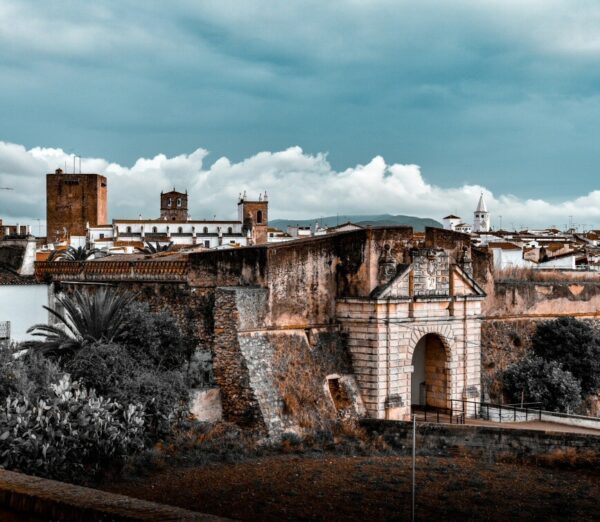
Alcázar and Torre del Homenaje in Olivenza
When in 1297 it was integrated into Portugal, Olivenza gains great relevance due to its border position and, above all, for being on the right bank of the Guadiana, since we must remember that the rest of Portugal is on the left bank.
It was like having one foot stuck in Castilla and very close to two other important strongholds, one Castilian, Badajoz, and another Portuguese one, also nearby Elvas, city known as The key to Portugal, since if it was conquered, it was easily reached Lisbon.
Alfonso IV build the Alcazar, and at the intersection, the tower of tribute, the highest on the entire Spanish-Portuguese border.
This tower, which is really tall, has a physical reason, and that is because it is located Olivenza On a plain, what geography does not help had to be compensated for with architecture.
But on the other hand there was the psychological element, since raising this very consistent tower was a way of making clear the power of Portugal in the face of a border that was very easily vulnerable and very easy for the Spanish to cross.
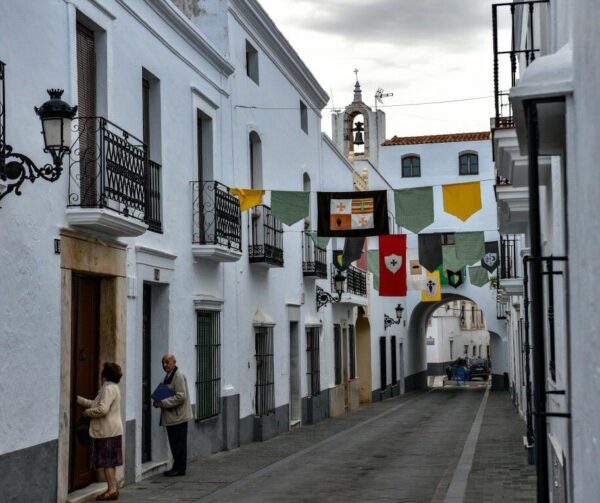
This tower was part of an old border with 12 watchtowers, of which only five remain today, located at high points in the territory.
As a curiosity, the tower is accessible with a ramp and not with stairs, so it can be visited by everyone.
Walls of Olivenza
Many times one of the best ways to know more about cities is by knowing their walls.
El King Don Dinis is in charge of populating Olivenza with Portuguese coming from all over the kingdom, and built the first walls that were square in shape with four gates, one on each side, from which the city developed.
Olivenza It came to have several walls, and the line of facades that surrounds the Alcázar is the perimeter that the first of all occupied.
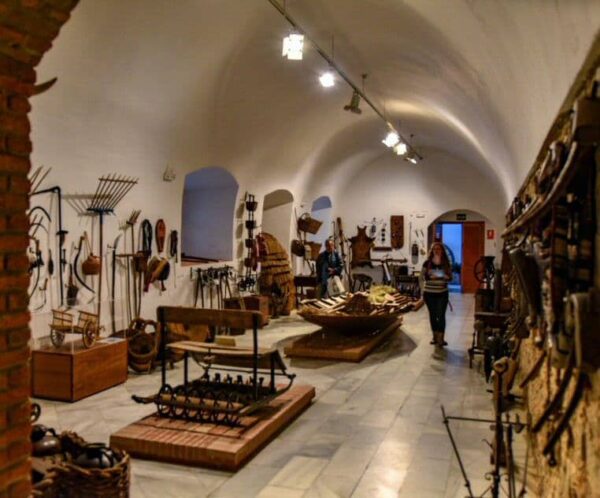
The second wall disappeared over time, but its mark remained on the urban fabric, in such a way that the oval they occupied can be perfectly seen.
Later there was another one from the 16th century, and then the last bastioned one, which is the one with the largest perimeter of all, and runs around the convent.
As you will see on your visit, Olivenza It is a city full of walls that reflect its continuous expansion and its great defensive needs.
González Santana Ethnographic Museum in Olivenza
Located in an old military building, the Olivenza Ethnographic Museum It is one of the largest and most important in the country.
Don't forget your Travel Insurance
Are you organizing your trip or getaway? Don't leave without take out your travel insurance before, and here we explain why. If you hire it with us, you have a 5% discount
It is a representation of the uses and customs of the Olivenza ancient, of what the world was like at the end of the 19th century until almost the middle of the 20th century.
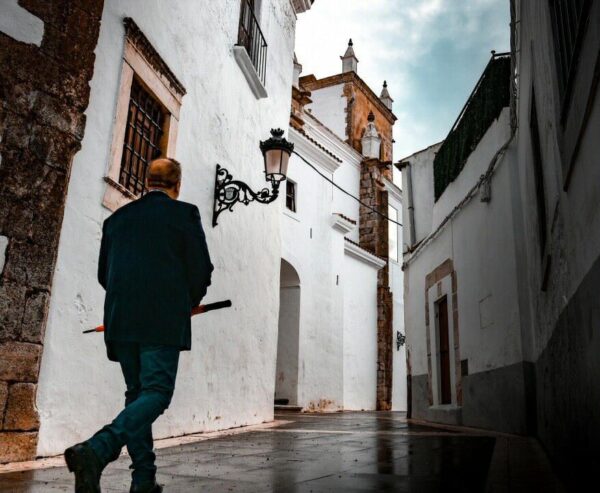
In this museum you can see the evolution of customs and living habits, which collide with the great evolution during the last three decades with such profound technological, social, and economic changes.
In the museum located inside the Alcazar You can see several rooms with the different utensils used by the different artisan guilds.
It is undoubtedly a very curious visit. especially if you are not used to seeing the tools that were used in the towns.
San Juan de Dios Convent in Olivenza
El Convent of San Juan de Dios It was built between the 16th and 17th centuries, and the building has had many uses throughout history.
They say that there was a noblewoman oliventina named Leonor, which decided to donate all the fortune it had at its death to create this convent, which initially housed the Poor Clare nuns.
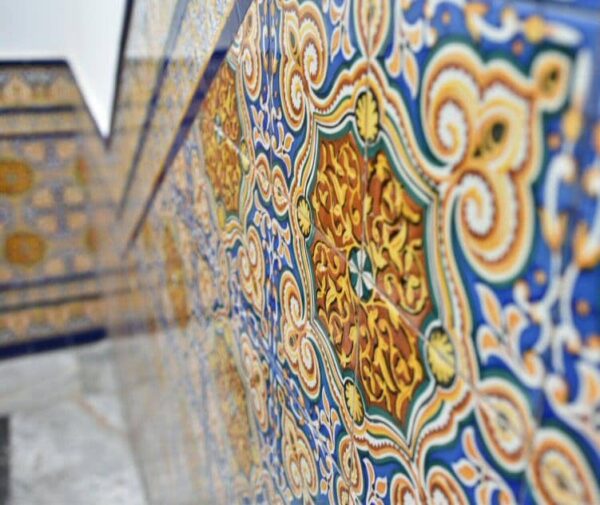
This building full of ghost stories was a hospital, and even a military barracks, and the last of the bastioned walls of the city closes around the convent. Olivenza.
Manueline Art of Olivenza
El manueline art was widely developed in Portugal, and it is very difficult to find in Spain, but in Olivenza is possible.
Especially in the two churches of the city, which is where you can see more tiling of this style.
It is very common to think that to see this classic tilework with white and blue tones it is necessary to travel to Lisbon u Porto, but in this Extremaduran town the exhibition is quite interesting.

Church of Santa María de la Magdalena in Olivenza
Perhaps the best exponent of Portuguese Manueline art in Olivenza is church of Saint Mary of the Magdalene, XNUMXth century.
This Manueline style is seen on the outside in the mix of the architecture of late gothic with the naturalistic decorations with marine elements.
And inside, in its large turned columns that resemble ropes, as well as in the historic tiles.
Eat the typical sweet of Olivenza
For those with a sweet tooth, in Olivenza there very special sweet which is only made here and in small productions.
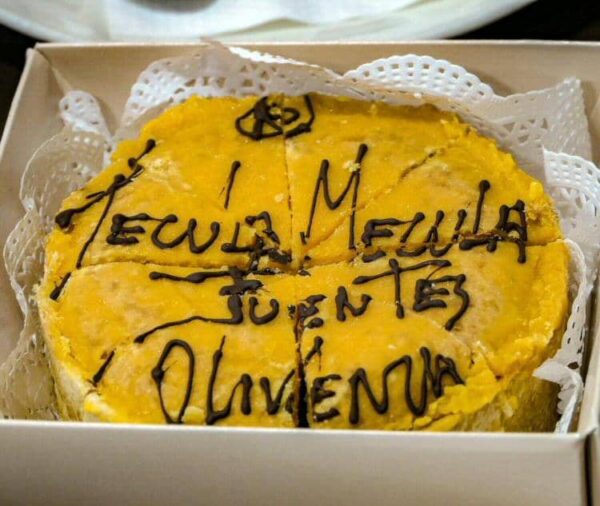
In the Casa Fuentes pastry shop they prepare the Tecula Mecula, which is a cake similar to toast yolk, a true delight.
Book your hotel, 15% discount, free cancellation
When planning your trip, we advise you to, well in advance, Book your hotel now on booking.com where you can find discounts from 15% and you will have a possible cancellation for free
Map: how to get to Olivenza
Olivenza is located just half an hour by car south of Badajoz, very close to the border with Portugal.


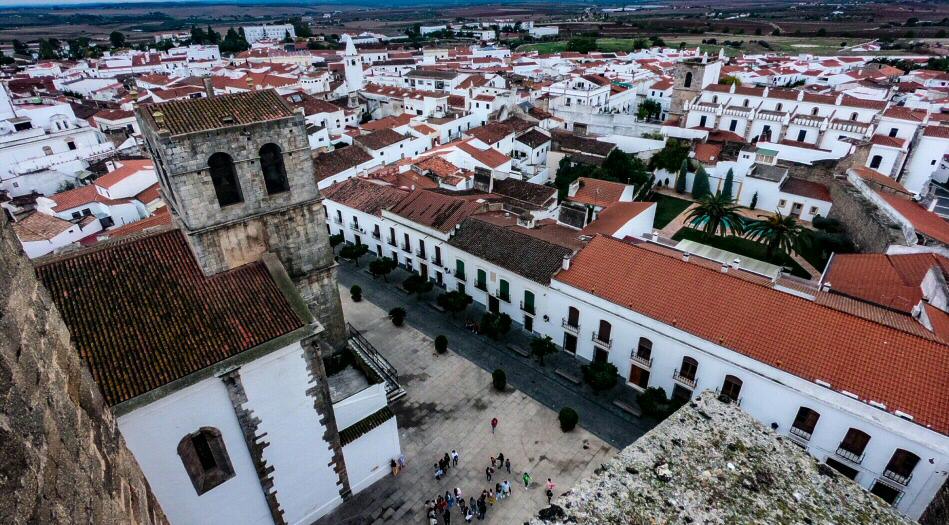

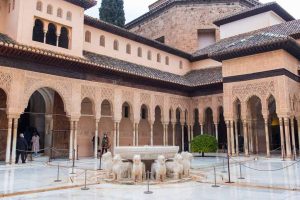
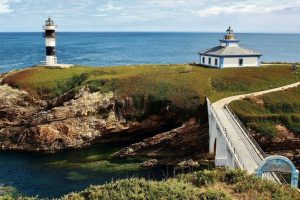











When talking about the right or left bank of a river, is the source of the river not left behind us and therefore, Olivenza is located on the left bank of the Guadiana?